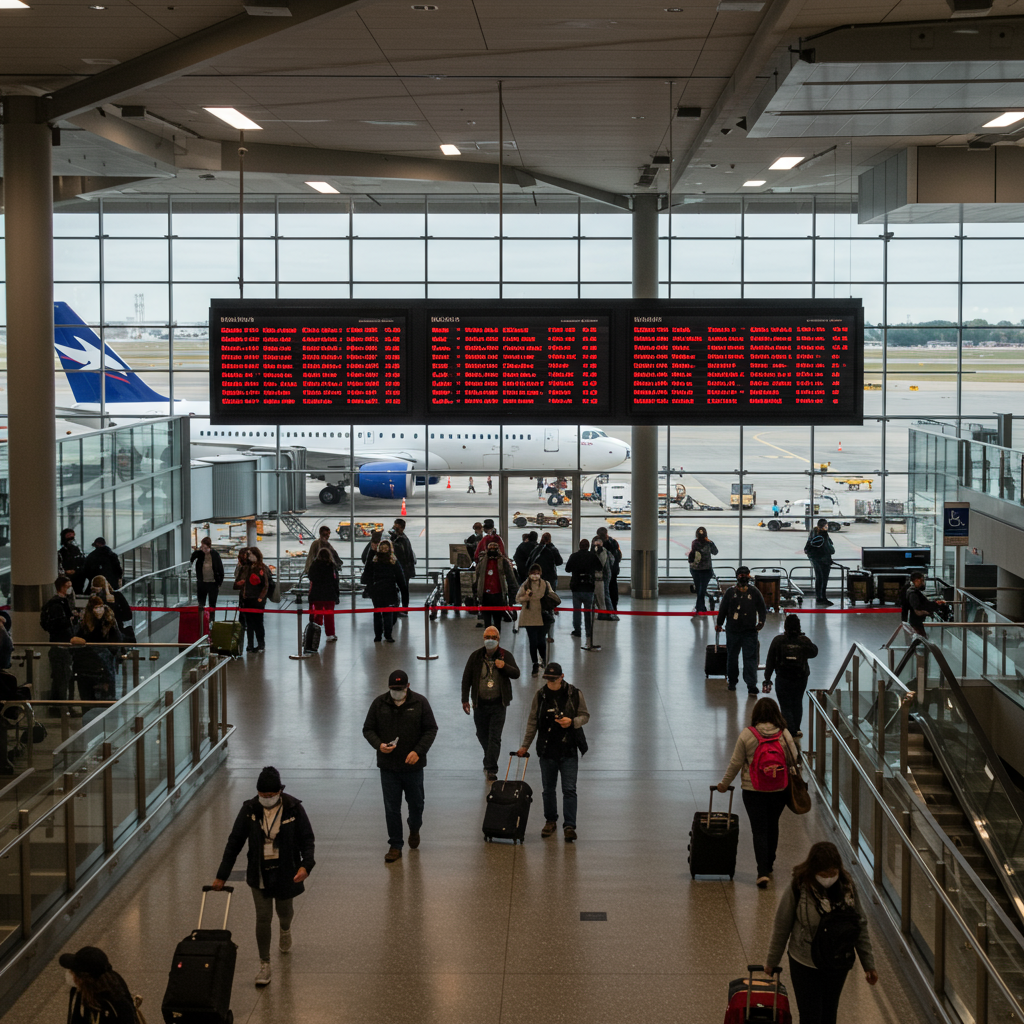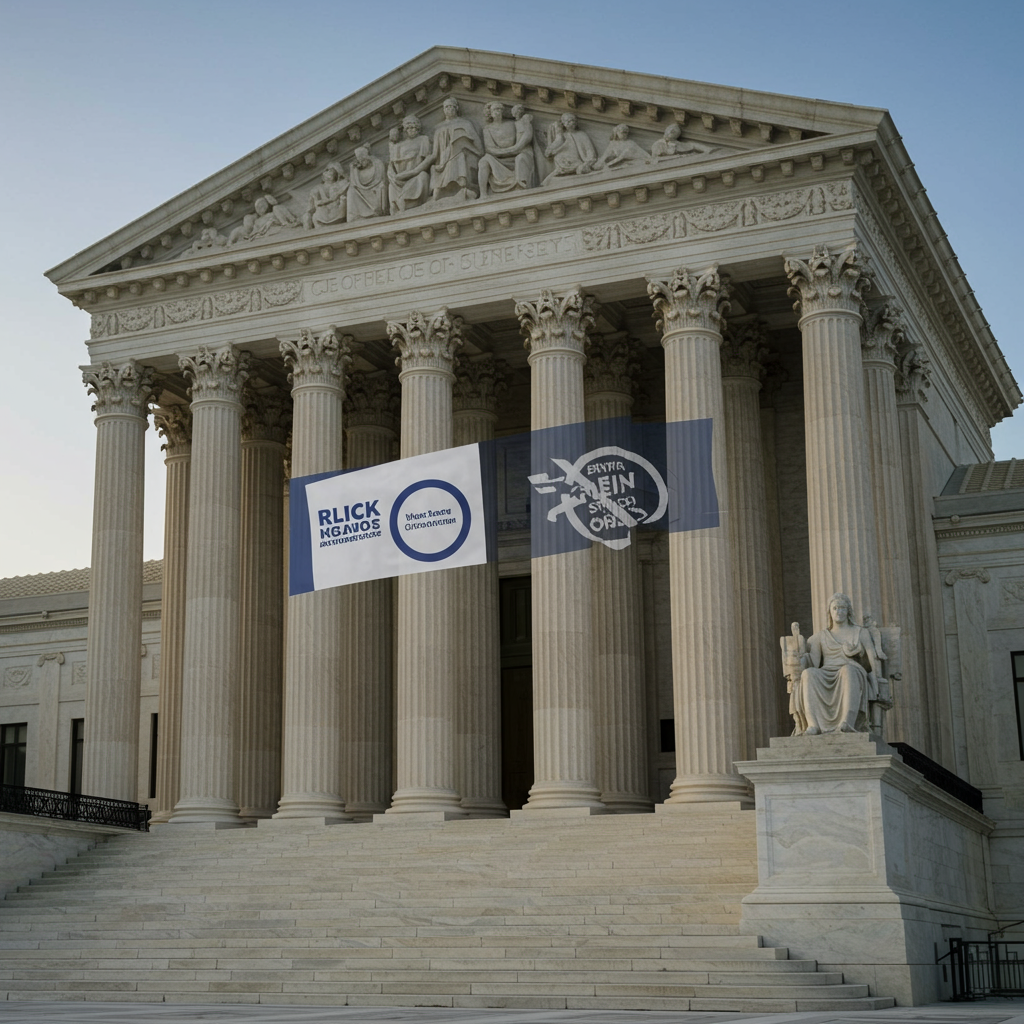The Federal Aviation Administration (FAA) recently enacted an urgent, unprecedented mandate: a 10% reduction in flights across dozens of the nation’s most vital airports. This drastic measure, announced amid a prolonged government shutdown, aimed to alleviate immense pressure on air traffic controllers and other essential aviation personnel working without pay. The decision sent immediate ripples through the travel industry, signaling potential widespread disruptions for millions of passengers.
This significant reduction directly impacted operations at approximately 40 major U.S. airports. Key hubs like Hartsfield-Jackson Atlanta International, Chicago O’Hare International, Dallas/Fort Worth International, Los Angeles International, and the Washington D.C. area airports were on the initial list. Travelers planning trips faced uncertainty, with increased flight delays and cancellations anticipated, particularly heading into busy periods like the Thanksgiving travel season.
Unprecedented Measures: Why the FAA Acted
The core reason behind the FAA’s decision was escalating concern over aviation safety. As the government shutdown became the longest in U.S. history, air traffic controllers and Transportation Security Administration (TSA) officers continued working without pay. This created immense stress, leading to a rise in fatigue-related incidents among critical staff. Bryan Bedford, then head of the FAA, expressed serious concern, stating that data, including voluntary safety disclosure reports from pilots, highlighted “fatigue building in the system.” This situation demanded immediate action to uphold the integrity and safety of the national airspace.
Transportation Secretary Sean P. Duffy underscored this commitment to safety, emphasizing that the primary goal was to “keep this airspace as safe as possible.” The National Transportation Safety Board (NTSB) also voiced its support, with Chair Jennifer Homendy noting that low staffing levels, mandatory overtime, and six-day work weeks directly impact safety. Reducing flight volume became a critical safety valve to prevent potential incidents, despite the significant inconvenience to travelers and cargo operations.
The Impact on America’s Busiest Airports
The directive to cut 10% of flights presented a considerable challenge for the aviation network. For a major hub such as Chicago O’Hare International Airport, this could translate to more than 120 fewer flights daily, impacting over 14,500 passenger seats. This ripple effect was set to cascade through the entire air travel system, leading to re-routing, extended layovers, and potential stranding for some passengers.
The full preliminary list of affected airports underscored the national scope of these FAA flight cuts:
Anchorage International
Hartsfield-Jackson Atlanta International
Boston Logan International
Baltimore-Washington International Marshall
Charlotte Douglas International
Cincinnati/Northern Kentucky International
Dallas Love Field
Reagan National
Denver International
Dallas-Fort Worth International
Detroit Metropolitan Wayne County
Newark Liberty International
Fort Lauderdale-Hollywood International
Honolulu International
Houston Hobby
Washington Dulles International
George Bush Houston Intercontinental
Indianapolis International
John F. Kennedy International
Las Vegas Reid International
Los Angeles International
LaGuardia Airport
Orlando International
Chicago Midway
Memphis International
Miami International
Minneapolis/St. Paul International
Oakland International
Ontario International
Chicago O’Hare International
Portland International
Philadelphia International
Phoenix Sky Harbor International
San Diego International
Louisville International
Seattle-Tacoma International
San Francisco International
Salt Lake City International
Teterboro
Tampa International
This extensive list highlights how deeply the government shutdown impact permeated the nation’s critical infrastructure. Travelers were advised to monitor their flight status closely and remain flexible with their plans.
Airline Responses and Traveler Advice
Major U.S. carriers, represented by Airlines for America, swiftly engaged with the federal government to understand the full implications of the reduction mandate. Their goal was to mitigate the impact on both passengers and shippers. Airlines like United, American, and Southwest outlined strategies to minimize disruption, often prioritizing international and hub-to-hub services while reducing regional or domestic mainline flights.
Significantly, several airlines, including United, announced flexible refund policies. These policies allowed customers, even those with non-refundable or basic economy tickets, to request a refund if they chose not to fly, regardless of whether their specific flight was impacted. This move aimed to offer some recourse to passengers facing potential airport delays or cancellations. Barry Biffle, CEO of Frontier Airlines, issued blunt advice for travelers within the 10-day window: avoid non-refundable basic tickets and consider booking backup flights on other airlines due to high chances of being stranded. This practical advice became crucial for those navigating the uncertainty.
The Political Dimension and Lasting Lessons
The decision to implement flight reductions during the government shutdown quickly became a flashpoint for political debate. Lawmakers from both sides exchanged blame for the shutdown, with some criticizing the flight cuts as “spiteful and unnecessary” or a form of “extortion,” while others, like Sen. Ted Cruz, blamed Democrats for “flirting with disaster.” Republicans and Democrats alike used the crisis to reinforce their political narratives.
Despite the political rhetoric, Transportation Secretary Duffy and NTSB Chair Homendy maintained that the decision was solely about safety, not political leverage. This distinction is critical for understanding the gravity of the situation. The episode underscored the vulnerability of essential services like air traffic control when federal funding falters. It highlighted how critical infrastructure, even when staffed by dedicated personnel, can be strained to breaking point under prolonged financial uncertainty. The event serves as a potent reminder of the far-reaching consequences of political impasses on everyday citizens and vital national systems.
Frequently Asked Questions
Why did the FAA implement flight reductions during the government shutdown?
The FAA implemented a 10% reduction in flights primarily due to mounting safety concerns. The prolonged government shutdown meant air traffic controllers and other essential aviation personnel were working without pay, leading to widespread fatigue. FAA head Bryan Bedford confirmed that data revealed “fatigue building in the system,” necessitating these cuts to maintain aviation safety and alleviate pressure on the workforce. This was a direct response to protect the integrity of the national airspace.
Which major US airports were affected by the FAA’s 10% flight cuts?
Approximately 40 major U.S. airports were affected by the FAA’s flight reductions. Key hubs included Hartsfield-Jackson Atlanta International, Chicago O’Hare International, Dallas/Fort Worth International, Los Angeles International, and several airports serving the Washington D.C. area. Other significant airports like Boston Logan, Miami International, Denver International, and San Francisco International were also on the comprehensive list, reflecting a nationwide impact on air travel.
What steps should travelers take if their flight is affected by major disruptions?
Travelers whose flights are affected by major disruptions, such as these FAA flight reductions, should first check their airline’s official website or app for the latest status updates. Many airlines offered flexible rebooking or refund options, even for non-refundable tickets. It’s advisable to understand your passenger rights. For urgent travel, considering alternative transportation or booking a backup flight on another airline (as advised by Frontier CEO Barry Biffle) might be necessary. Always communicate directly with your airline for specific assistance.
Conclusion
The FAA’s decision to implement a 10% reduction in flights across numerous U.S. airports during a historic government shutdown was an extraordinary measure driven by paramount safety concerns. It exposed the fragile underbelly of critical national infrastructure when faced with political deadlock. While the cuts aimed to prevent air traffic controller fatigue from compromising aviation safety, they inevitably led to significant travel disruptions, impacting both commercial passengers and cargo operations. This event provided a stark illustration of how governmental impasses can directly affect the lives and plans of millions. It emphasized the vital importance of a stable, fully funded federal workforce to ensure the continuous, safe operation of essential public services. For travelers, it underscored the need for vigilance and flexibility during periods of national uncertainty.




